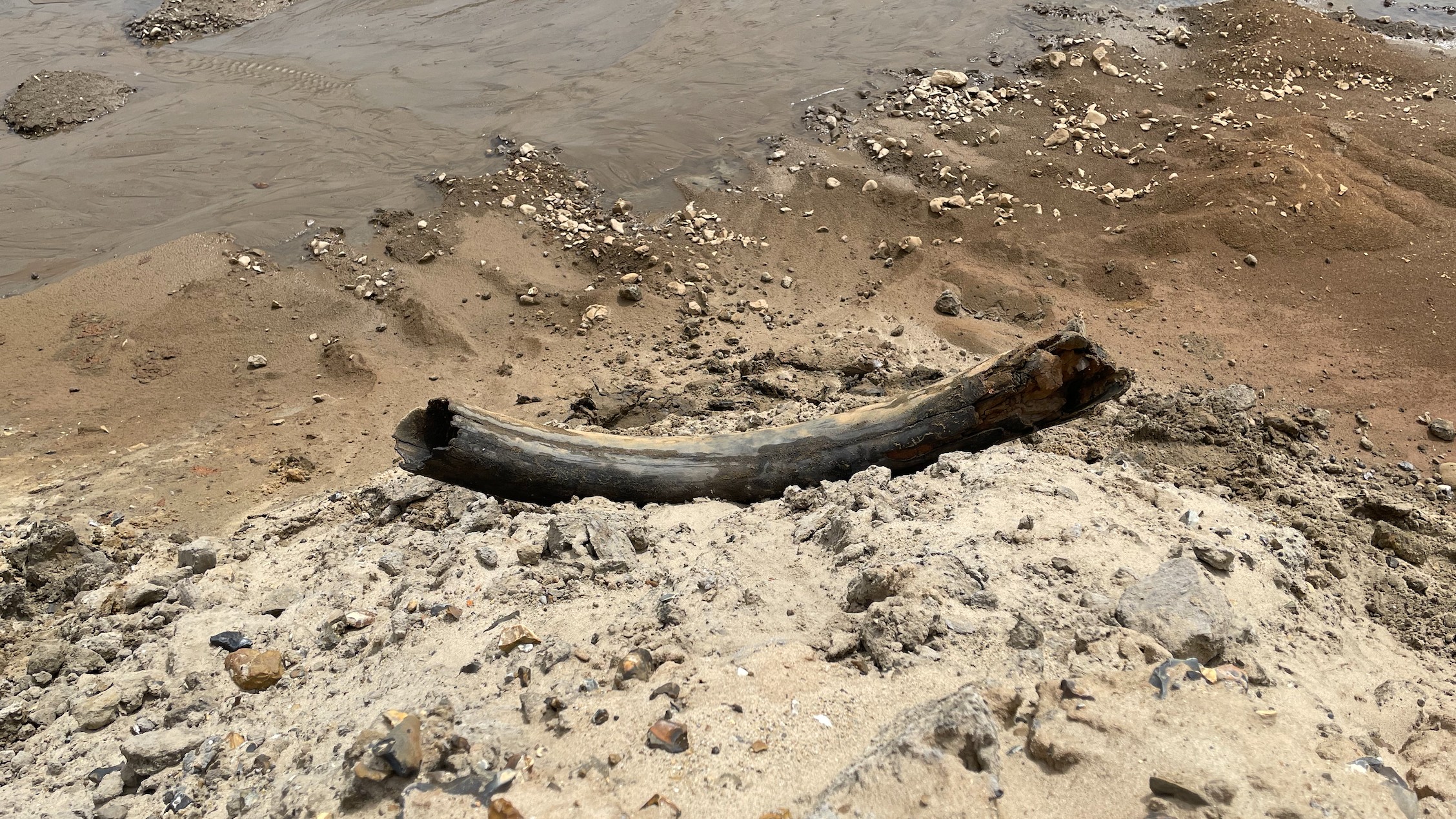400,000-year-old mammoth tusk found sticking out of the ground in English quarry
Fossil hunters stumbled upon a large mammoth tusk during a "fossil walk."

A fossil hunter has discovered a mammoth tusk that is believed to be more than 400,000 years old sticking out of a rocky quarry in east England.
The tusk, which is roughly 4 feet (1.2 meters) long, belonged to a steppe mammoth (Mammuthus trogontherii) — the second-largest species of mammoth that ever roamed Earth.
"I couldn't believe it," Jamie Jordan, the founder and curator of Fossils Galore, a fossil museum in England, told Live Science. "It's something that you don't expect to find. Normally you see on TV… or you see in books, where someone's come across a tusk just laying there … and lo and behold, it happened to me."
On July 11, Jordan and his colleague, Sarah Moore, were on a "fossil walk" searching for samples in a quarry in Cambridgeshire, about 65 miles (105 kilometers) north of London, when they noticed a "tube-like structure" popping out of the sand, he said.
Related: The CIA wants to bring woolly mammoths back from extinction
When they inspected the find, they realized it was a steppe mammoth tusk, which they believe is from a fully grown male that would have been about 13 feet (4 m) tall, Jordan said.
These behemoths wandered Asia and eventually Europe and North America around 1.8 million to 200,000 years ago, during the icy early and middle Pleistocene. They were the ancestors of woolly mammoths (Mammuthus primigenius) — the last species of mammoth to exist.
Get the world’s most fascinating discoveries delivered straight to your inbox.

Jordan and Moore have done hunts in this area before, previously finding other fossils such as a mammoth toe bones, teeth and even a different tusk in February 2023.
However, the newly found tusk is much better preserved than their last discovery, likely because the quarry was flooded for a few years when it was dug up, then recently drained, which kept the fossil from drying out and crumbling, Jordan said.
The team will spend the next few months preserving and analyzing the tusk to find out more about the mammoth's life. Jordan is particularly interested in determining the predators that this mammoth may have faced while it was alive.
"We've already seen some predation marks on [the tusk], but I just need to confirm that," Jordan said. Mammoths were "competing against stone-age man at the time and other predators like wolves and cave hyenas."
These types of fossil discoveries are important because they help us "build a bigger picture of what life was like back in those times," he added.

Kiley Price is a former Live Science staff writer based in New York City. Her work has appeared in National Geographic, Slate, Mongabay and more. She holds a bachelor's degree from Wake Forest University, where she studied biology and journalism, and has a master's degree from New York University's Science, Health and Environmental Reporting Program.


